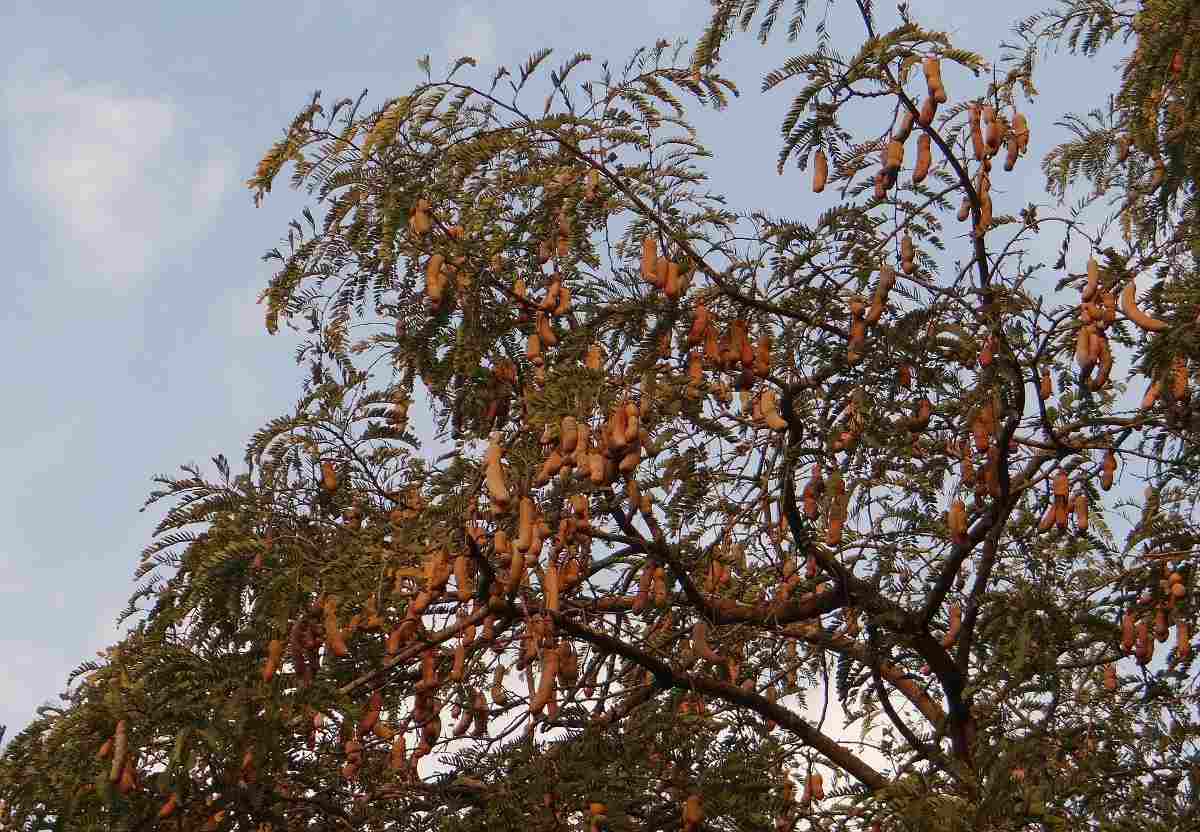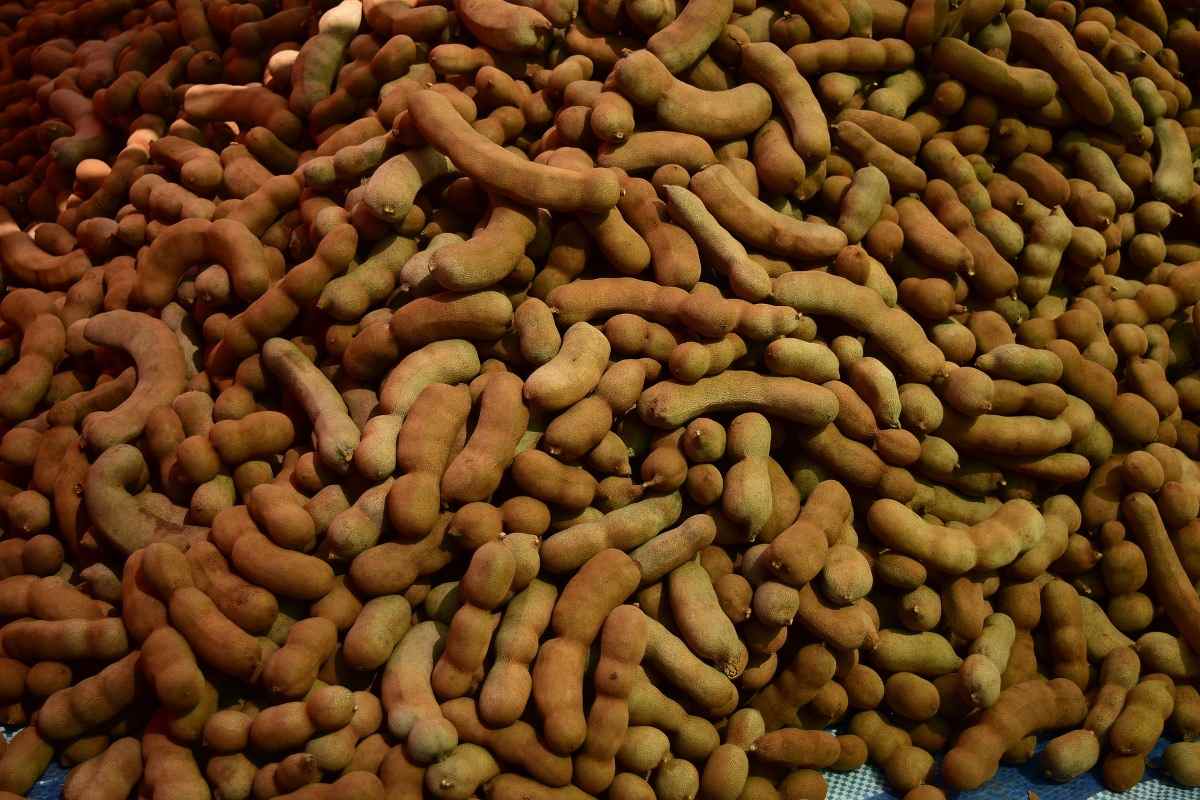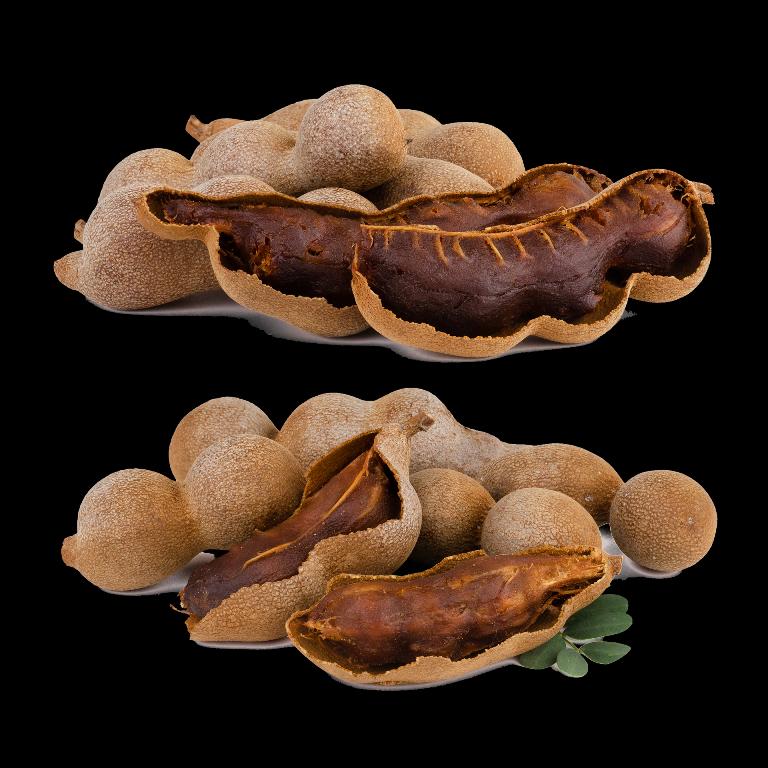Organic Tamarind Production, Cultivation, and Farming in India
Tamarind is botanically recognized as Tamarindus indica L. and belongs to the Leguminaceas family. India is the highest exporter, producer, and consumer of Tamarind in India. Tamarind is very easy to grow the type of tree that can grow and fruit considerably simply. Tamarind has much importance because of which it is widely utilized all over the world. Tamarind can perfectly fit into the agroforestry system as it is leguminous. Leaves of the Tamarind tree are generally utilized as fodder for cattle. Powdered seeds and foliage and are seldom used as cattle feed.
A Step by Step Guide to Organic Tamarind Production

The Tamarind tree is one of the common trees growing in every place in India. Generally, Tamarind trees cultivated under rainfed conditions, mainly in Karnataka, Andhra Pradesh, Madhya Pradesh, Tamil Nadu, Maharashtra, and Orissa. Tamarind is also one of the popular avenue trees which yield useful fruits and timber besides providing shade. It is believed to be native of Tropical Africa but now cultivated throughout South East Asia, America, Australia. Tamarinds are long-lived, slow-growing, evergreen trees that under best conditions can grow around 80 feet high with a spread of 20 to 35 ft. The Tamarind is well suitable for semiarid tropical conditions, even though it does well in many humid tropical areas of the world with seasonally high rainfall. Young trees are very susceptible to frost, but mature trees will withstand brief periods of -2°C without serious injury. Dry weather is most important in the period of fruit development. The Tamarind tree is too large to be grown in a container for any length of time.
Tamarind pulp is used in several culinary preparations. Tamarind is also used as a raw material for the preparation of wine-like beverages. The Tamarind kernel powder is found to be used for its sizing properties, in textile, and confectionery, and pharmaceutical industries. The flowers and tender leaves are used as vegetables. And coming to the medicine, it is used as a laxative, healing, appetizing and antihelmintic. Tamarind is also used against fluorosis.
Different Varieties of Tamarind Grown in India
Some hybrid and high yield varieties of Tamarind grown in India are;
PKM-1 – This variety is a clonal selection of any seedling type. It usually gives fruits early and yields around 263 kg pods per year per tree.
Urigam – The pod size is long with sweet pulp.
Pratisthan – This variety is mainly developed from Maharashtra with acidic-sweet pulp.
Yogeshwari – This variety having red coloured pulp and gives high yielding.
Raktichinch – absolute red-coloured pulped fruit.
Makhanwaan, Secthong, Manila sweet – Sweet varieties
Cumbum – High yielding variety.
Jagdish – It is a sweet-sour high yielding variety from Maharashtra
DTS I and DTS II – High yielding regular varieties released from Dharwad, Karnataka.
Goma Prateek – This having a short juvenile period of 3 to 4 years.
Climatic and Soil Requirement for Organic Tamarind Production
Tamarind can be grown in humid to dry hot regions and these trees have acid climatic adaptability. Tamarind trees are very sensitive to frost. The suitable rainfall requirement for the Tamarind tree is 750 to 1900mm but can thrive in the region having a low annual rainfall of 500 to 750mm. Tamarind is well suitable for semi-arid tropical conditions. Tamarind tree also grows well in several humid tropical areas with seasonally high rainfall. Tamarind tree grows well over a wide range of climatic and soil conditions, occurring in low-altitude woodland, savannah, and bush, frequently associated with termite mounds.
Tamarind tree grows in slightly acidic, well-drained soils, and although it cannot withstand stagnant inundation. Tamarind trees can tolerate a wide range of physical site characteristics. It prefers wooded grassland and semi-arid areas, and can also be found growing along riverbanks and stream. Tamarind does not penetrate the rainforest. Its wide root system contributes to its resistance to wind and drought. Tamarind tree also bears saline air and fog in coastal districts, and even monsoon climates, where it has shown its value for plantations.
Young trees are mostly affected by the slightest frost, but older trees seem more cold-resistant than mango, lime or avocado. A long, well-marked dry season is essential for fruiting. It can succeed on a variety of soils, but alluvial or deep loamy soils providing the best condition for the development of its long taproots are ideal. It can tolerate alkaline and slightly saline soils. It can withstand salt spray and can be planted fairly near to the seashore.
Temperature and Light Requirements for Tamarind Production
A tree of tropical climates, Tamarind succeeds under a maximum annual temperature ranging from 33 to 37°C to a minimum of 9.5 to 20°C. The trees are very sensitive to fire and frost and need protection when trees are small. And coming to the older trees, these are more resistant to extremes of temperature compared to young trees and can withstand temperatures as high as 47°C and as low as -3°C without serious injury. Tamarind is more cold-resistant than avocado, mango, and lychee.
Tamarind is a slow-growing and light-demanding tree. These are frequently isolated from other vegetation and the ground is generally bare around the tree due in part to the dense shading by the canopy.
Tamarind Seed Propagation
By seed is the least expensive means of propagation and can be used to crop a large number of new plants from a minimum of stock material. Moreover, seed propagation is essential to produce seedlings to be used as rootstocks onto which designated cultivars can be grafted. The major disadvantage of seed propagation is that seeds fail to produce plants true to type and also resulting seedlings take a longer time to produce productive plants than those produced through vegetative propagation. A better understanding of the processes involved in initial growth and seed germination is the most important prerequisite for the increased domestication and cultivation of Tamarind. Seed propagation of Tamarind is the simplest method of propagation which does produce feasible seeds but seeds do not produce true to the type plants. Seed propagation in Tamarind is done by collecting the pods from February to April. Seeds from ripe fruits are wash well with plain water. After this, it is tried for germination within 1 to 2 days. Generally, 1 kg of seeds contains 1800 to 2000 seeds. Seeds are then somewhat sun-dried to retain its viability.
The most common method of propagation in vogue is by seed. Though, being heterozygotes, it does not breed true to type through seed. The prolonged juvenile phase is also due to the predominance of seed propagation. Seed propagated trees can be expected around 15 to 20 years for economic yields. Vegetatively propagated plants start yielding after 3 to 4 years. Vegetative methods such as air layering, approach grafting, and budding have been successful. Though, layers are well suitable for planting under dryland conditions for lack of deep growing tap root system. To get true to type plants with reduced pre-bearing age, uniform yield, and growth vegetative methods like grafting and budding are used in establishing Tamarind orchards.
Planting Process in Organic Tamarind Production
To provide proper medium and space for the development of vigorous and deep taproot system planting must be done in pits of 1m x 1m x 1m size. The pits must be dug in the summer season and filled in with 2 kg single superphosphate at the base and with a mixture of well-decomposed topsoil and farmyard manure. Around 100g 10% carbonyl powder be mixed in the soil mixture to avoid the problem of termites. The planting distance may vary from 8m X 8m to 10m X 10m based on the soil type, wider spacing in deep soils, and closer spacing in shallow soils be accepted. Rootstock seedlings are planted from June to July and budded by a patched method using a bud from the improved variety.
The Tamarind becomes a fairly large tree, so keep this in mind at the time of planting the tree. It must be planted in sunny areas. It is highly wind-resistant with supple, strong branches. Tamarind may be propagated from seeds, and vegetatively by grafting, marcotting, and budding. Rootstocks are propagated from seed, which germinates within one week. Seeds hold their viability for several months if kept dry. Seeds must be selected from viable trees with good quality and production. Germination of Tamarind seed is best when seeds are covered by 1.5 cm sandy loam or by a mixture of sand and loam. Seedlings must achieve a minimum of 80 cm before being transplanted to their final location at the starting of the rainy season. Tamarind trees start to produce fruit in 6 to 8 years.
Tamarind trees can also be propagated from branch cuttings of the mother tree. Vegetatively propagated trees come into bearing in 3 to 4 years of age. They produce more fruits along with more-uniform fruits compared to seed propagation. Young trees must be planted in large holes to accommodate the root system. They must be planted somewhat higher than ground level to allow for subsequent settling of the soil and a water basin must be constructed around each tree to assure suitable moisture for young trees.
Irrigation Requirements in Tamarind Production
Young Tamarind trees need suitable soil wetness up to trees to become established, but mature trees do well without supplemental irrigation. Need to avoid over-watering which results in soggy soils. Water seedlings deeply when the first inch of soil is dry to the touch. Once the tree is established, it does not need regular watering and can withstand periods of extreme drought conditions.
Pruning of the Tamarind Tree
Prune your Tamarind tree more frequently to maintain its shape and control its growth. Remove damaged and dead wood from the plant.
Organic Fertilizer Requirements in Tamarind Production
Feed the plant with organic fertilizer according to the instructions of the manufacturer. Fertilize young Tamarind trees with 6 – 6 – 3 (N – P – K) fertilizer every 2 to 3 months during the season. Mature trees don’t require fertilizer but can be fertilized infrequently with 8 – 3 – 9 (N – P – K) fertilizer to give a boost.
Application of manure and compost must be done too, to decrease the need for fertilizer. Coming to the fertilization, the Tamarind tree needs a little fertilization, so you want to apply fertilizer according to soil-test recommendations only and make sure you don’t overdo it. In the absence of a soil test, fertilize young trees every 2 to 3 months with 6-6-3 (N – P – K) fertilizer or an organic equivalent, starting with an application of 1/4 pound per tree and gradually increasing to 1/2 pound of fertilizer per year of a tree’s age, 3 to 4 times each year. If Tamarind tree is bearing fruit, fertilize with 8-3-9 (N – P – K) or an organic equivalent at the rate of 1/2 pound per year of the tree’s age, at a similar schedule of 3 to 4 times each year. Another reason that it’s more significant to have a soil test before fertilizing the tree. The cooperative extension service where you can perform a soil test for a nominal fee and all you have to do is take a sample of soil from around the tree into your local office.
Organic Pests and Diseases Control in Tamarind Production
The most serious pests of the Tamarind are scale insects, mealy-bugs, and seed beetles. Tamarind pods are attacked by the bruchid beetle Caryedon, serratus, or C. gonagra. Diseases affected in Tamarind include powdery mildews, a sooty mould, leaf spot, stem disease, stem, root and wood rot, stem canker, a bark parasite, and a bacterial leaf-spot.
There are hardly any diseases and pests on the Tamarind plant. Up to now no serious diseases and pests have been reported. The plant has developed usual resistance against these maladies and hence needs hardly any plant protection measures. The Tamarind tree is prone to pests like aphids, scales, mealybugs, and fruit borers. In diseases, it’s affected by sooty mould, root rot, and leaf spot.
When and How to Harvest Tamarind
- Types of Pesticides Used in Agriculture: A Beginner’s Guide
- Economical Aquaculture: A Guide to Low-Budget Fish Farming
- 15 Common Planting Errors That Can Doom Your Fruit Trees
- How to Make Houseplants Bushy: Effective Tips and Ideas
- Innovative Strategies for Boosting Coconut Pollination and Yield
- Pollination Strategies for Maximum Pumpkin Yield

Harvesting of Tamarind takes place from 1st March to 15th April. Tamarind fruits harvested by the pulling pod away from the stalk. Tamarinds may be left on the tree for nearly 6 months after maturity. The Tamarind tree starts to bear fruit at the age of 13 to 14 years. The flowers appear in June and July and the pods ripen in the cold season. The pods must be allowed to ripen on the tree until the outer shell is dry. In India, harvesters may simply shake the branches to cause mature fruits to fall and they leave the remainder to fall naturally when ripe. Pickers are not permitted to knock the fruits off with poles as this would damage developing flowers and leaves. These harvested fruits are stored in a neat and clean place. The harvested pod must be sun-dried for getting the best pulp. Harvested fruits after 15th April must be stored in refrigeration.
Commonly Asked Questions about Tamarind Production
You should not miss this: Orgnaic Saffron Farming.

How much time does it take for a Tamarind tree to bear fruit?
Tamarind trees will generally fruit within 3 to 4 years if provided the best growing conditions. Seedlings must begin to produce fruit in 6 to 8 years, while vegetatively propagated trees will usually bear in half that time.
How tall does a Tamarind tree grow?
The Tamarind tree is reaching a maximum crown height of 12 to 18 metres.
What is the lifespan of the Tamarind tree?
An average life span of the Tamarind tree is 200 years.
In case if you are interested in this: Growing Fruits in the Backyard.
NICE I WANT TO agriculture products for business.how to do on line trading?trees grows within short duration for good business. varieties of agriculture related business.agro consultancy and service for modern farming,machine,seeds etc
At the Horticulture Research Centre at Anantapur one gets different varieties
NICE STORY OF TAMARIND, I LIKE IT. AND WILL TRY TO CULTIVATE ASAP